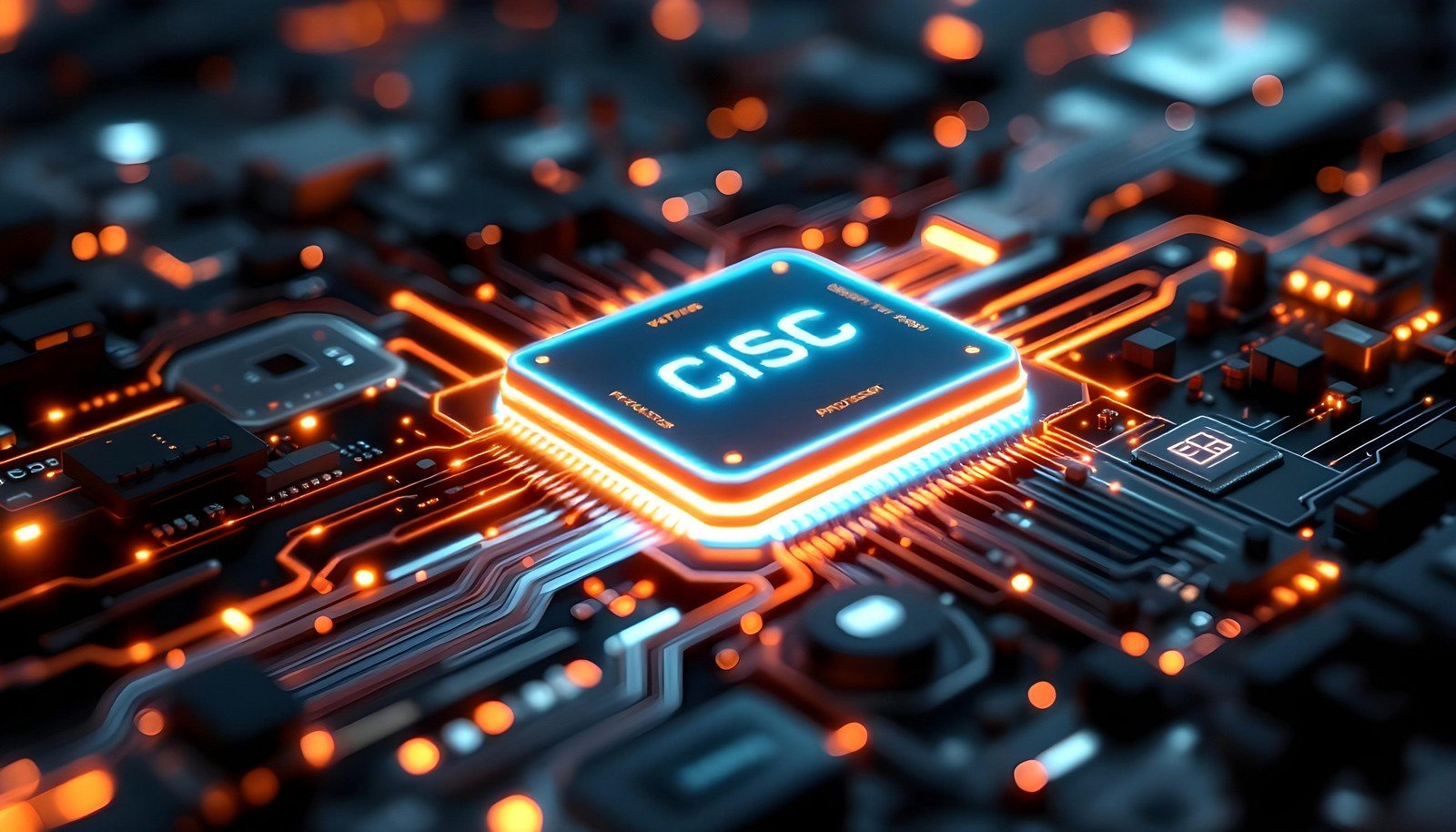CISC Processor

Quick Navigation:
- CISC Processor Definition
- CISC Processor Explained Easy
- CISC Processor Origin
- CISC Processor Etymology
- CISC Processor Usage Trends
- CISC Processor Usage
- CISC Processor Examples in Context
- CISC Processor FAQ
- CISC Processor Related Words
CISC Processor Definition
CISC (Complex Instruction Set Computing) processors are a type of microprocessor architecture designed to execute multi-step operations or complex instructions within a single instruction cycle. Unlike RISC (Reduced Instruction Set Computing) processors, which focus on simple instructions and efficiency, CISC processors aim to reduce the number of instructions per program by implementing complex and varied instruction sets. This design enables more functionality in hardware, but at the cost of increased hardware complexity. They are prevalent in older computer architectures, such as x86, and are widely used in applications requiring backward compatibility.
CISC Processor Explained Easy
Think of a CISC processor as a super-helpful toolbox that can do many tasks with one tool. If you want to build a treehouse, instead of needing one tool to cut wood, another to hammer nails, and a third to measure pieces, a CISC processor combines all those functions into a single multi-purpose tool. It makes things easier and faster for the user, but the tool itself is more complicated to build.
CISC Processor Origin
The origins of CISC architecture date back to the 1960s and 1970s when memory was expensive and slow. To save memory and improve computational speed, engineers developed CISC processors, which allowed programmers to write shorter instructions that could be executed directly by the hardware. This approach dominated early computing before RISC gained prominence in the 1980s.
CISC Processor Etymology
The term “CISC” stems from its design philosophy of emphasizing complexity in instruction sets to reduce the programmer's workload and optimize memory usage.
CISC Processor Usage Trends
CISC processors were predominant in the early decades of computing, especially in mainframes and early personal computers. Today, while RISC architectures dominate mobile and embedded systems, CISC processors (e.g., x86) remain central to desktops, laptops, and many servers. They are critical in scenarios requiring extensive backward compatibility and multi-purpose computing.
CISC Processor Usage
- Formal/Technical Tagging:
- Microprocessor Architecture
- Computer Hardware Design
- Instruction Set Computing - Typical Collocations:
- "CISC processor design"
- "x86 CISC architecture"
- "CISC versus RISC comparison"
- "legacy computing with CISC processors"
CISC Processor Examples in Context
- Modern x86 processors by Intel and AMD still follow a CISC architecture while integrating RISC-like optimizations for performance.
- IBM's System/360, an iconic mainframe series, employed CISC architecture for general-purpose computing.
- CISC processors are used in video game consoles to support backward compatibility with older software.
CISC Processor FAQ
- What is a CISC processor?
A CISC processor is a microprocessor architecture that executes complex instructions directly in hardware, reducing the number of instructions needed for programs. - How is CISC different from RISC?
CISC focuses on complex instructions in hardware, while RISC simplifies instructions for faster execution. - Why is CISC still used?
Its backward compatibility and ability to handle complex tasks efficiently make it suitable for PCs and servers. - What is the x86 architecture?
It is a widely used CISC architecture implemented in many desktops and laptops. - Are CISC processors slower than RISC?
Not necessarily; modern CISC processors include optimizations like pipelining and micro-operations. - What are examples of CISC processors?
Examples include Intel Core i7 and AMD Ryzen processors. - Why was CISC important historically?
It helped optimize memory usage and computational resources in early computers. - Can CISC processors run RISC instructions?
Yes, through emulation or hybrid designs, some CISC processors can execute RISC-like instructions. - What are micro-operations in CISC?
They are smaller, RISC-like instructions that modern CISC processors use internally for better performance. - What industries rely on CISC processors?
Industries such as gaming, software development, and enterprise computing leverage CISC processors for their flexibility.
CISC Processor Related Words
- Categories/Topics:
- Computer Architecture
- Processor Design
- Computational Models
Did you know?
Despite the complexity of their architecture, modern CISC processors internally translate complex instructions into simpler operations, effectively blending CISC and RISC principles to optimize performance for modern computing needs.
PicDictionary.com is an online dictionary in pictures. If you have questions or suggestions, please reach out to us on WhatsApp or Twitter.Authors | Arjun Vishnu | @ArjunAndVishnu

I am Vishnu. I like AI, Linux, Single Board Computers, and Cloud Computing. I create the web & video content, and I also write for popular websites.
My younger brother, Arjun handles image & video editing. Together, we run a YouTube Channel that's focused on reviewing gadgets and explaining technology.



Comments powered by CComment